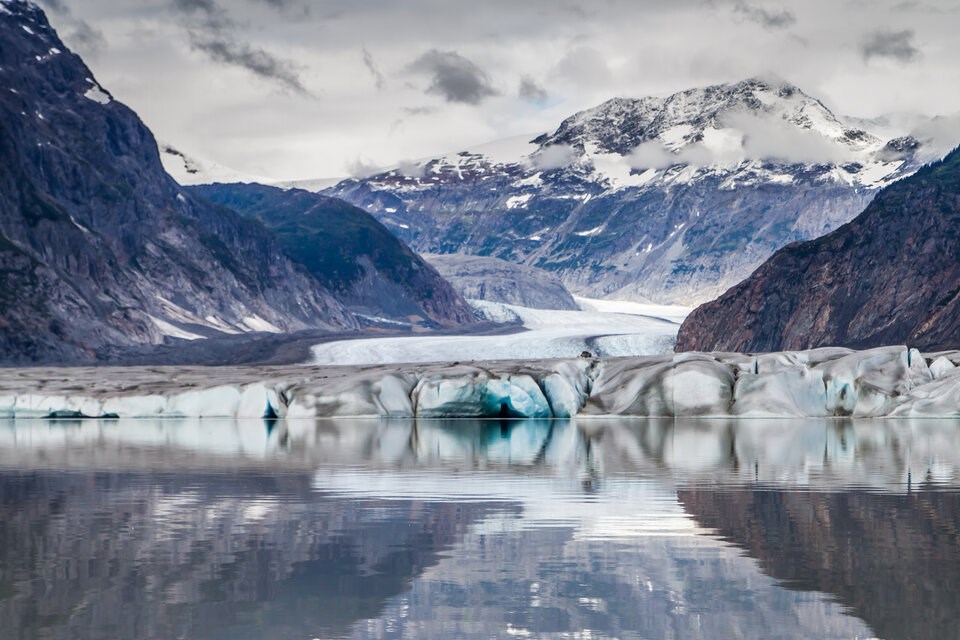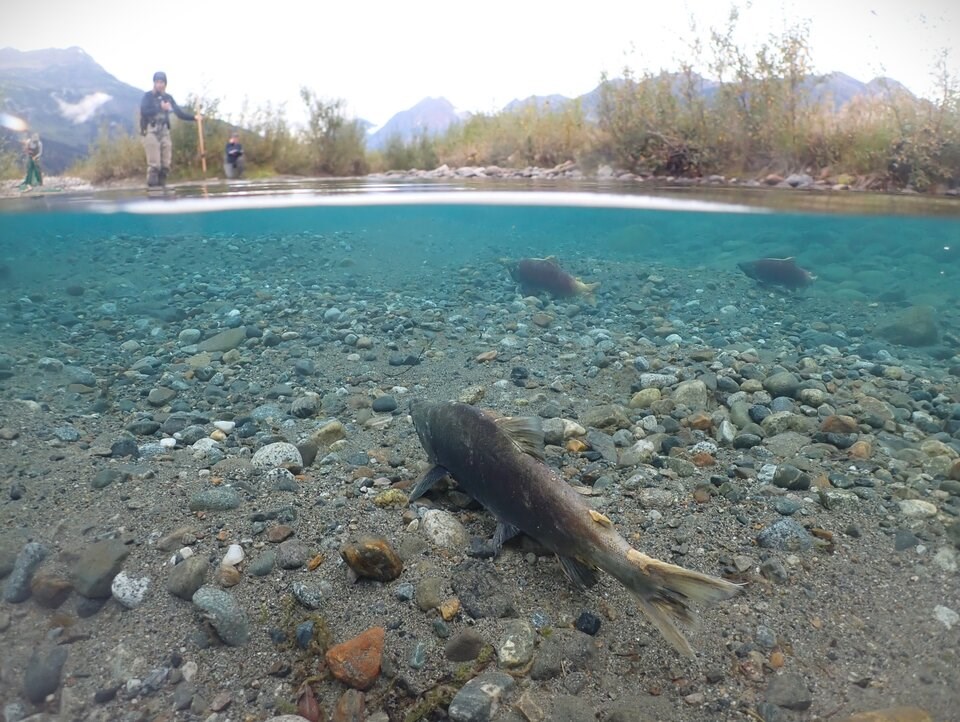The retreat of glaciers along the B.C.-Alaska border is opening up thousands of kilometres of new salmon habitat, and could offer a refuge from hotter rivers to the south. But according to a new research, those salmon could be swimming into direct conflict with mining companies looking to cash in on a new rush for gold.
The , published in the journal Science Thursday, shows that in 25 of the 114 rivers surveyed in the transboundary region, more than half of future salmon habitat lies with five kilometres of a mining claim.
Jonathan Moore, the lead author on the study and a professor in Simon Fraser University’s Earth to Ocean Research Group, said the arrival of salmon in the face of retreating glaciers is happening in “real time.” By 2100, another 6,000 kilometres of salmon habitat will open up for pink, coho and sockeye in an area known as the “golden triangle.”
“We have ice retreating, and right at this ice edge, we have these new ecosystems that are being born, these ecosystems that are transforming,” said Moore.
“And then we started to come across some quotes from mining companies saying, 'Hey, we're looking to the edges of glaciers for mineral deposits that haven't ever seen the light of day in the last 15,000 or 20,000 years.'”

Moore and his colleagues downloaded B.C. government data on where mineral claims have been staked and then overlayed it on past research he did that showed where salmon would find new rivers of refuge in a warming world.
The 25 rivers they identified lying near mining claims feed into even larger rivers like the Skeena and Nass, home to the second and third largest wild salmon runs B.C.
“These are places that are the size of some countries in Europe,” said Moore of the two big rivers. “It could be tens of thousands of fish returning to any given one of these watersheds.”
Moore said mining can cause “far-reaching and long-lasting harm” to salmon ecosystems. By digging up vast quantities of earth, those operations can release damaging amounts of sediment into rivers, mobilize toxins otherwise locked up in the earth, and introduce new toxic chemicals such as cyanide during processing.
“It could actually kill salmon,” said Moore.

As ice retreats and new salmon ecosystems open up, Moore said big decisions need to be made over whether the rivers will be stewarded for fish or whether they should be dug up for gold and other minerals. He says the current Mineral Tenure Act in B.C. allows companies to stake claims on private and unceded Indigenous land.
“In general, it’s an open staking system,” he said. “And so what that means is the trajectory of these ecosystems has been set by mining companies, individuals interested in this speculation, and market prices, rather than discussions about how we want to restore these ecosystems.”
“This paper is just shining a light on this conflict that's emerging.”

Tara Marsden, a land-use planner for the Gitanyow Hereditary Chiefs and a co-author on the paper, said what the researchers found is part of a conflict between salmon and gold miners already playing out in Indigenous territory.
One tributary of the Nass River, where up to 80 per cent of some salmon species spawned, has faced steep declines in fish amid drought in recent years. But in Strohn Creek, some of those losses have been recovered as sockeye salmon seek refuge in water cooled by glacier retreat.
“It's like a second chance that nature has given us, and has given salmon. And so we want to make sure that area is as protected as possible,” Marsden said.

In 2016, Marsden took the radio-telemetry data showing returning fish to Strohn Creek and shared it with the B.C. government. She said a “very negative” response came back, essentially stating the area was not a good candidate for conservation because there were mineral interests nearby.
“The system prioritizes mining over everything, regardless if the value is there, regardless if there are salmon there. It just is the de facto priority for land use in B.C.,” Marsden said.
Since then, Marsden, said the salmon are returning to Stone Creek every year in ever greater numbers, even as mineral tenures continue to be staked across the landscape, from the alpine watershed down to salmon spawning locations.
“We weren't aware of it because there's no consultation. There's no notification that's happening,” she said.
In 2021, Gitanyow Hereditary Chiefs took matters into their own hands, declaring the section of the Nass River as an Indigenous Protected Area off-limits to mining interests. In the years since then, negotiations with the B.C. government have continued.

In a landmark B.C. Supreme Court handed down in September 2023, a justice ruled B.C. has a duty to consult Gitxaa艂a and other First Nations before granting mineral claims on their territories.
But Marsden worries that, despite the legal victory for First Nations, until the Mineral Tenure Act is reformed, mining companies will continue to lay claim near watersheds vital to the future survival of salmon.
“There are going to be reforms, but that could be after the next provincial election, that could be years down the road,” she said.
“There's nothing stopping anybody right now…”


